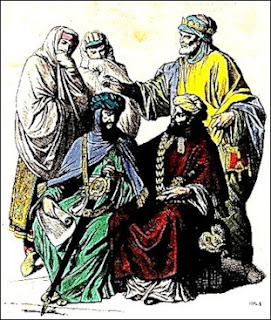His devotion to his second wife, however, was not a sign of dedicated monogamy. He had several children by several mistresses over his lifetime. We know these because, like many kings, he acknowledged them and made sure they had decent careers and marriages themselves.
Between his marriages he had a relationship with Inés Íñiguez de Mendoza. Their daughter, Urraca Alfonso, married the Lord of Biscay. They had many children.
He also had a relationship with Estefanía Pérez de Faiam, the daughter of one of his nobles (who was witness to several royal charters). Alfonso gifted her with many estates. They had a son who died young.
One Spanish historian claims that the archdeacon Fernando Alfonso de León of the Cathedral of Santiago de Compostela was Alfonso's son by a woman named Maura, from Salamanca.
A Portugese woman, Aldonza Martínez de Silva, bore three of Alfonso's children between 1214 and 1218. Rodrigo became lord of Aliger. Aldonza married a count of the kingdom of León. Teresa Alfonso de León married a noble of León, Nuño González "the Good."
A relationship that lasted longer than any of his marriages was with Teresa Gil de Soverosa, daughter of a Portugese noble. They had four children:
- Sancha, who married the Lord of Los Cameros (and later became a nun at a convent which she founded).
- Maria, who was married but later became mistress to Alfonso X of Castile (her cousin).
- Martin, who with his wife founded the Monastery of the Holy Spirit in Salamanca.
- Urraca, who married twice. She was born the year her father died.





